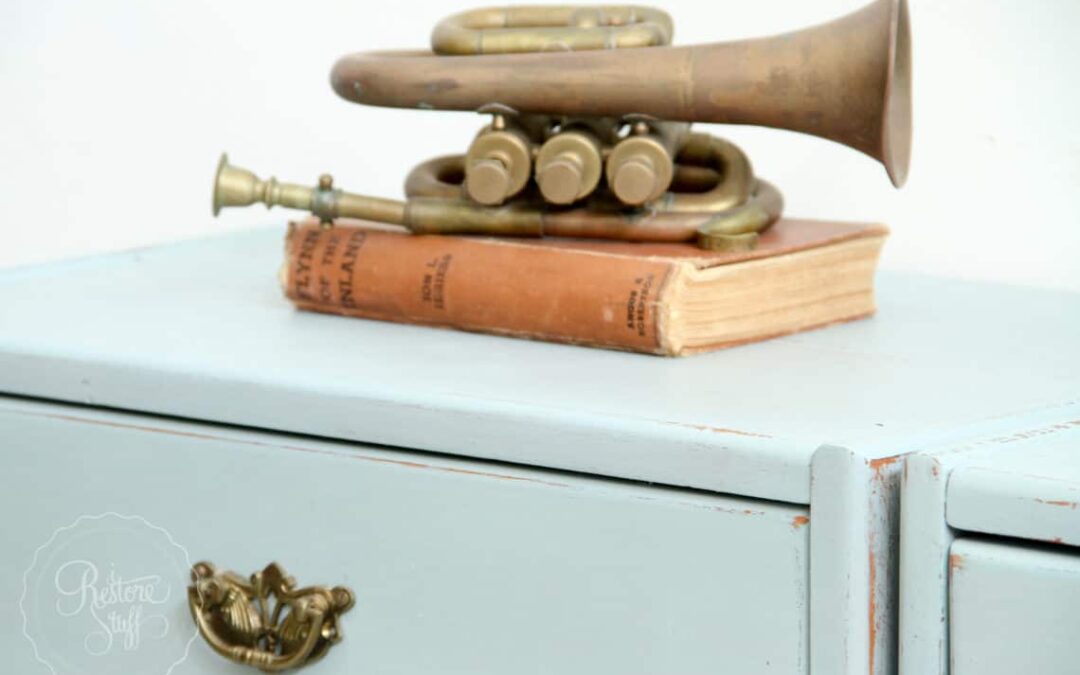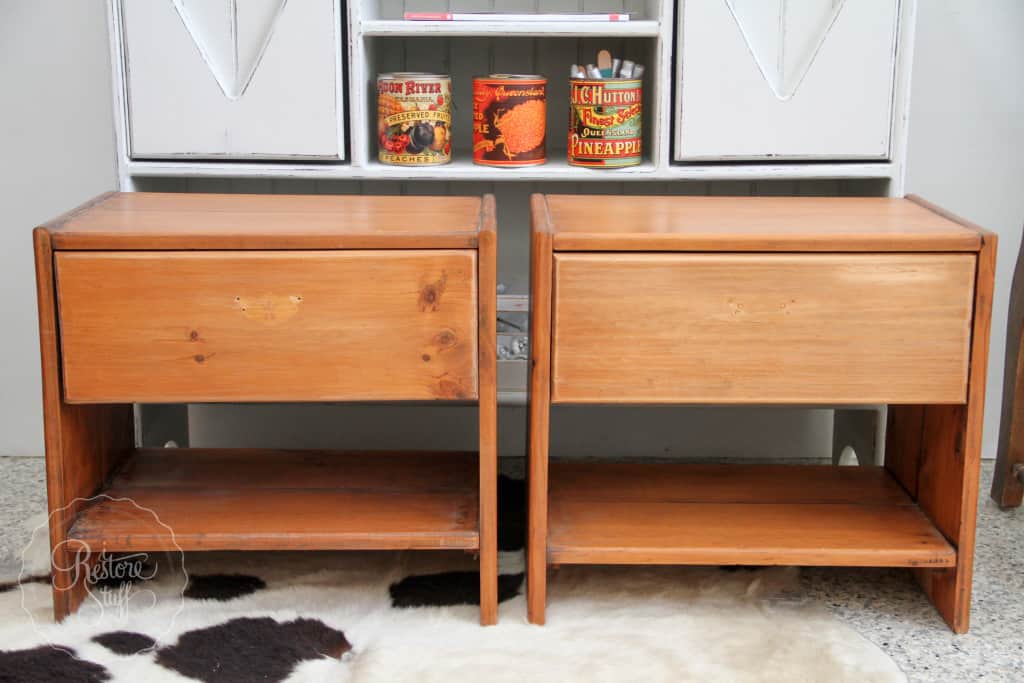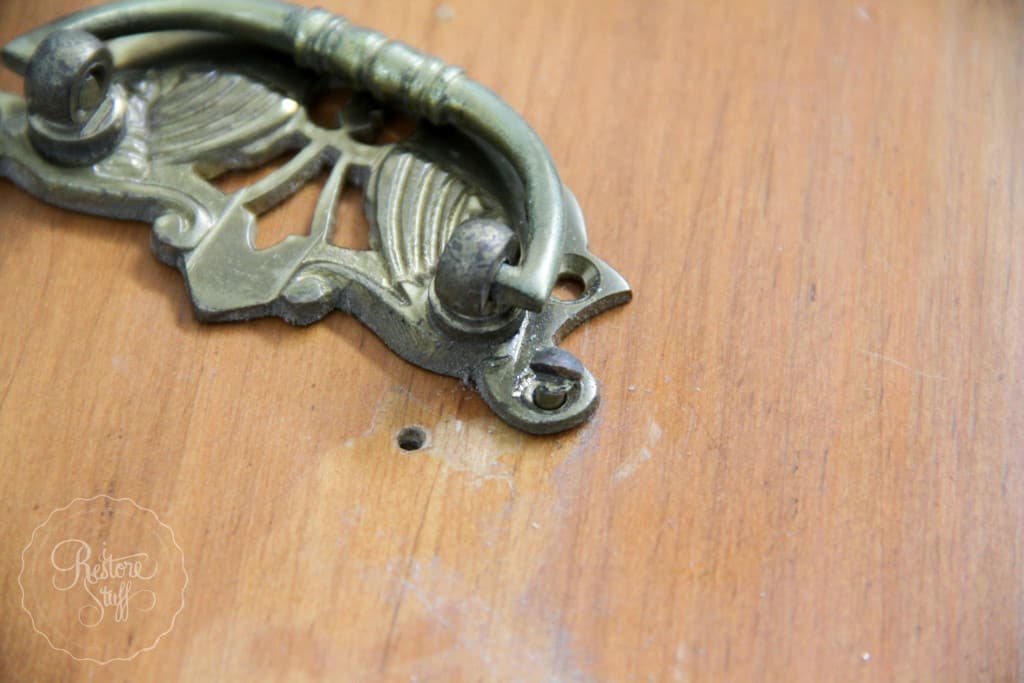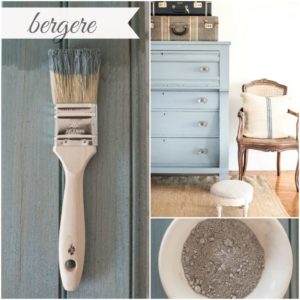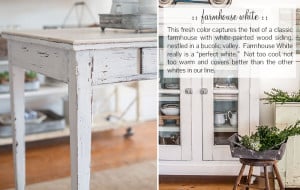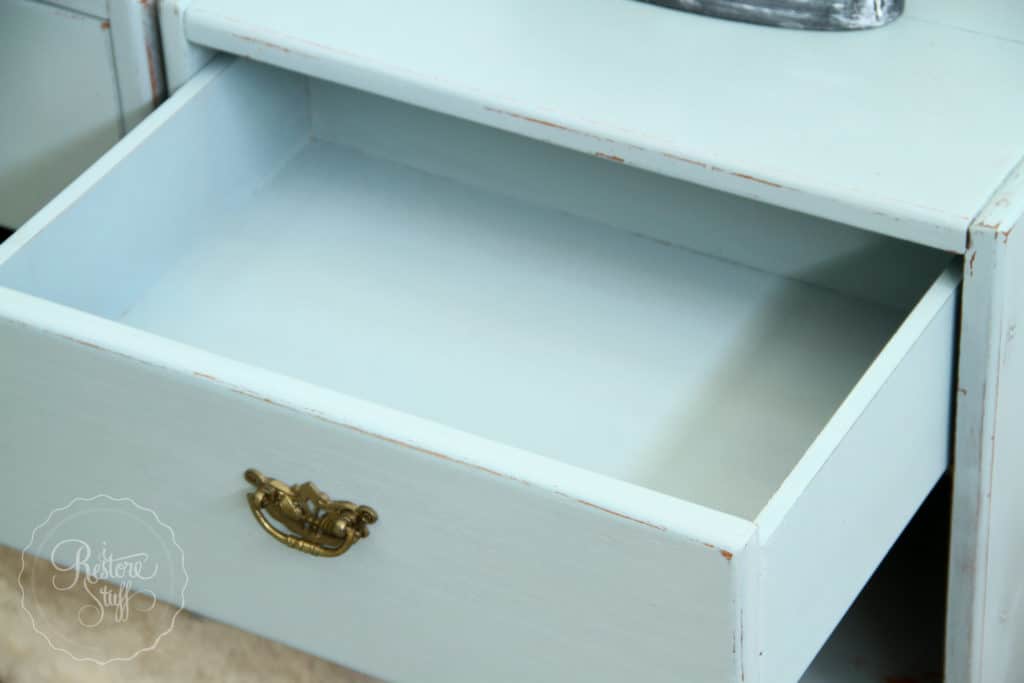Color Mixing
Before I launch into my latest makeover, at the end of this post, I’ll share some Top Color Mixing tips for creating custom colours with Miss Mustard Seed’s Milk Paint, including a pinnable graphic for you to pin, share or save.
Re-cycled Finds
Our local Recycle Market is a place I’ll often find furniture to upcycle, and that’s where I found these two rustic country looking “love-birds”. For other places to find furniture to up-cycle, check out my post: Top 10 Places to Find Furniture to Restore.
Apart from a little hassle unscrewing the handles (these screws were so old and 2 had busted in half – see pic below), these drawers were pretty easy to prep – just a quick rough sanding with my Sandi Hands sanding glove, and they were ready to paint.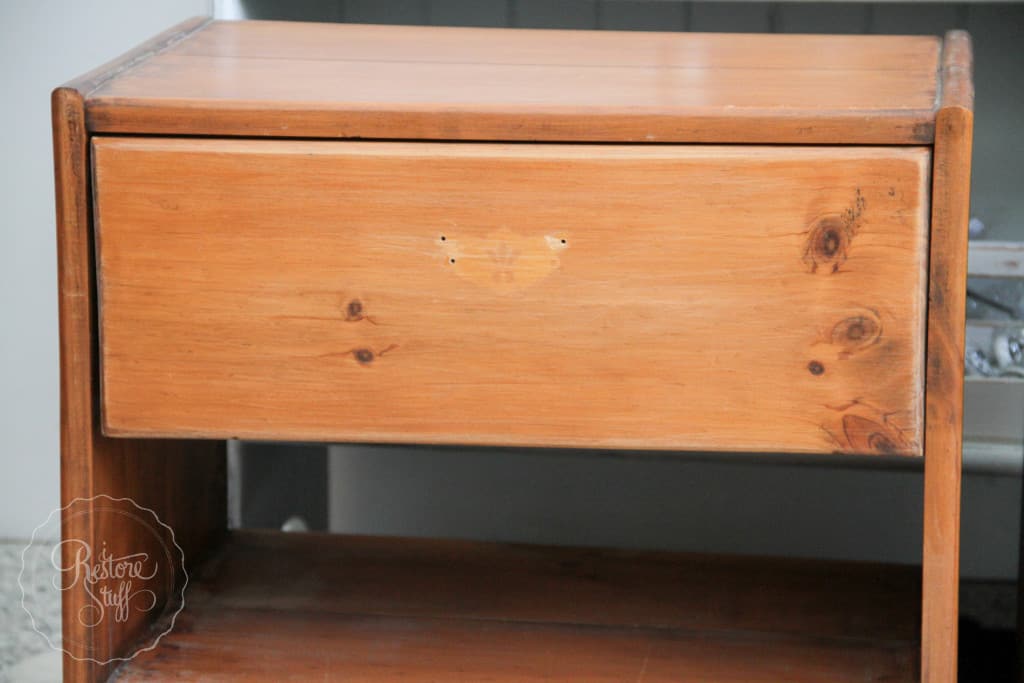
+
I mixed equal parts of the European colour, Bergere, with the new Farmhouse White (above), to create this pretty French Blue. For more of my Tips on Colour Mixing, scroll to the end of this post.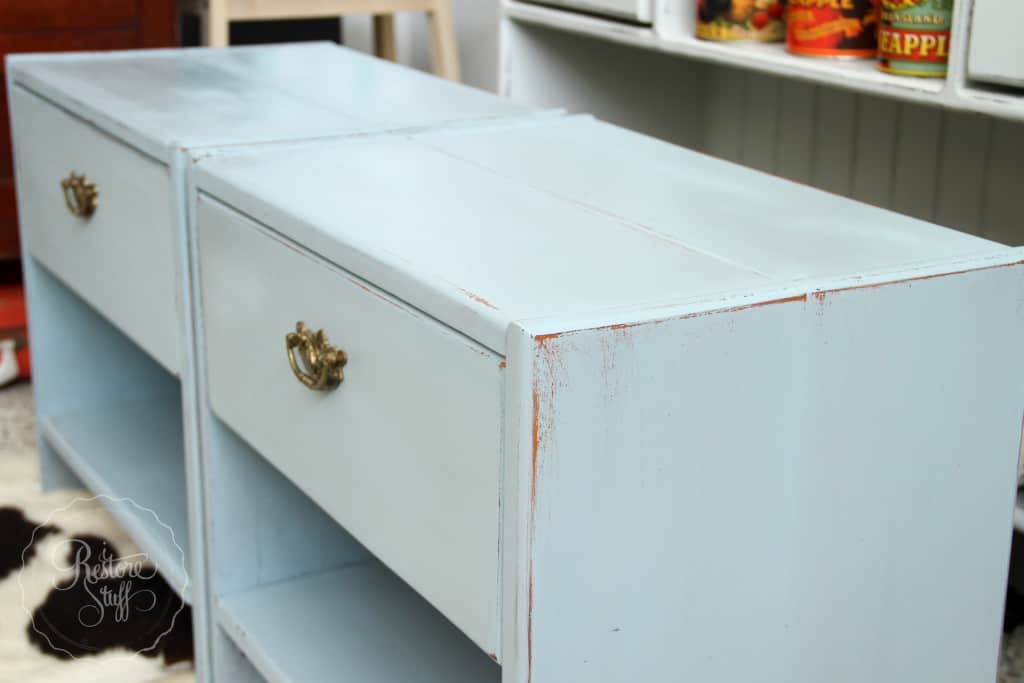

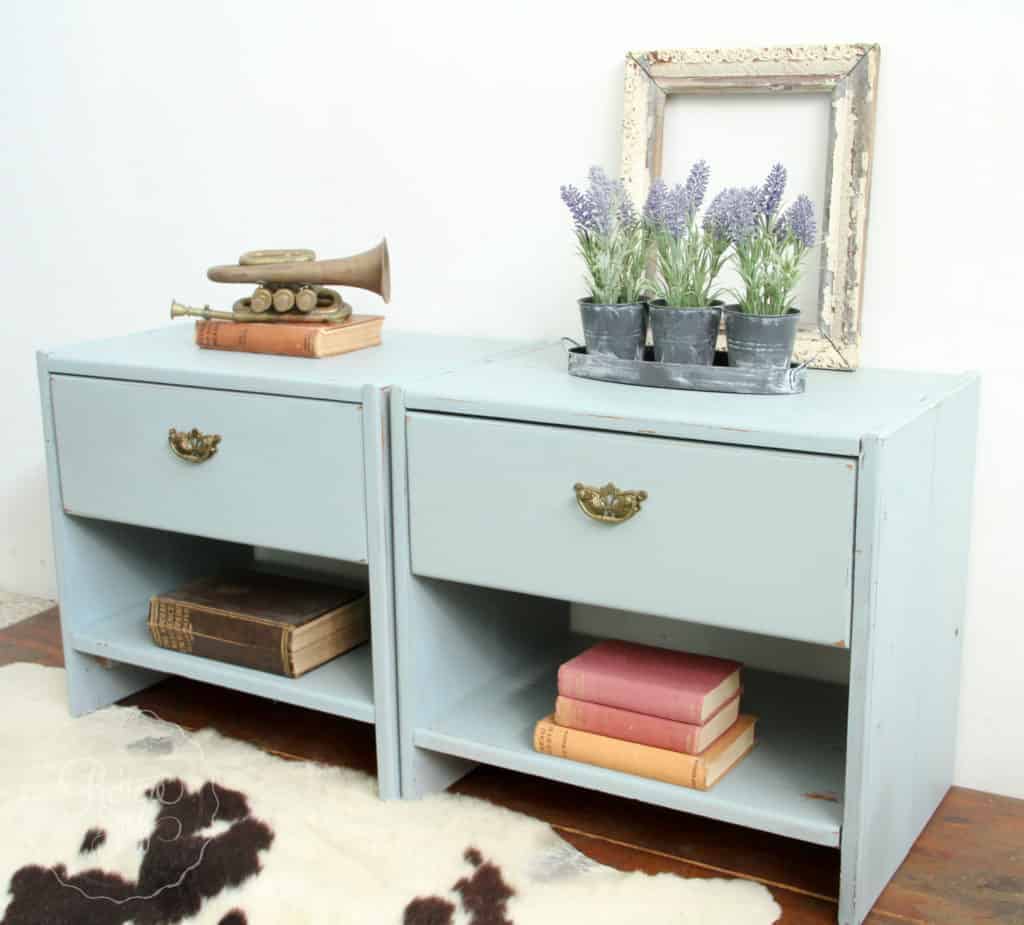
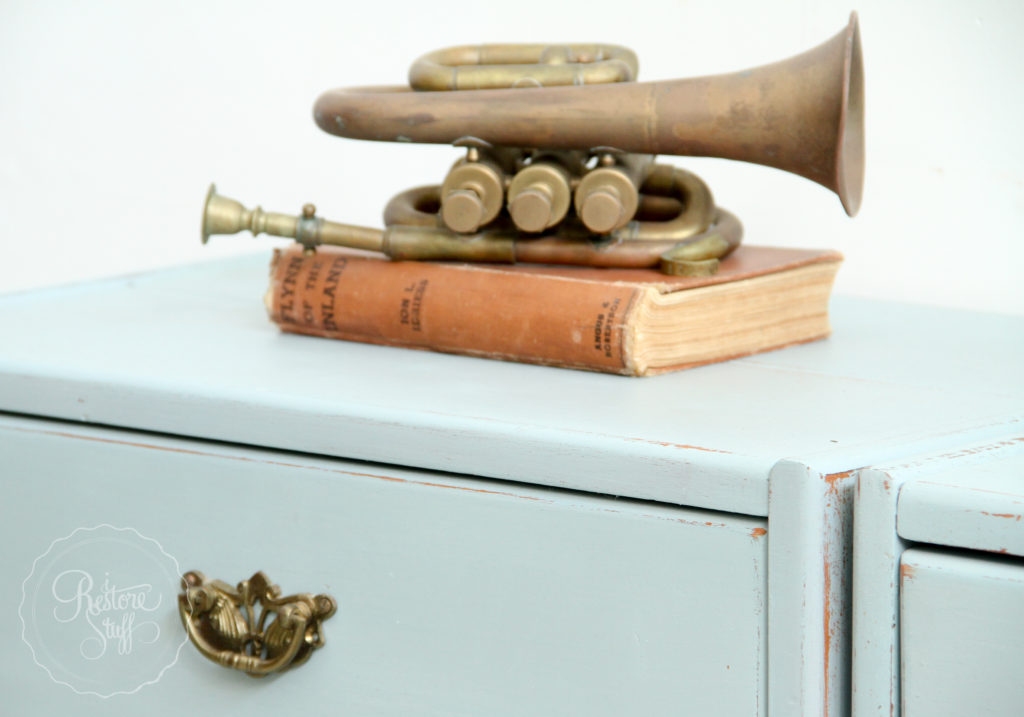
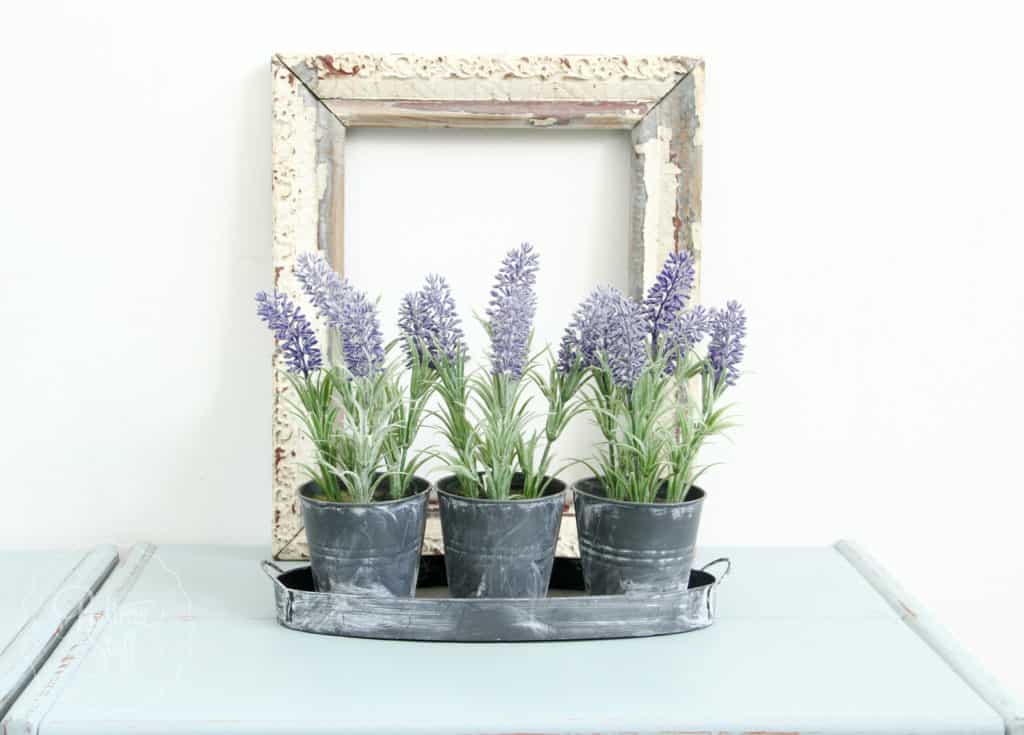
Tips for Custom Color mixing:
- Experiment – choose colours that you know will work together, but don’t be afraid to step out of the box and try some new combinations.
- ALWAYS write down your “recipe” – this makes sense, but is often forgotten. Then when we find the perfect colour, we ask “how did I get that?”
- Start with equal parts of two colours – If you are unsure where to begin, this is a great starting point. Then you can add more of one colour or the other as you mix and blend to get something you are happy with.
- Remember that the colour will dry differently to what it appears when it is wet. Paint out your colour on a sample board or cardboard to get a better idea.
- Then you will probably want to test out finishes like wax over the top of your painted sample, as this will also change and deepen the colour of your paint. (On this point, the surface that you will eventually paint on, will also affect the colour slightly. You can see what I mean by watching the first part of my tutorial video on “Finishes“)
- If you are using Milk Paint powders, make sure you blend the powders well together, then add your water. This isn’t essential, but may help in getting more of a consistent finish. Make sure you are always adding equal parts water to the amount of paint powder you are mixing.
Custom Colour’s you might like to try:
- Miss Mustard Seed’s Milk Paint tutorial on Mixing Colours. Some great colour recipes here.
- Vintage Chalkboard Green – by Alison from The Golden Sycamore
- Robyn’s Egg Blue – by Abbe from All Dolled Up
- Creamsicle Orange – by Abbe from All Dolled Up
- The Purple Painted Lady has created a fun custom colour mixer that you can enter your colours into online and it will show you a virtual colour that will be made from your MMS colours. Remember that it won’t be exact as you cannot compare colours on a computer screen with the real thing, but it’s a great start to seeing what may work for you.
Here’s a Pinnable graphic for you to save on your Pinterest board:
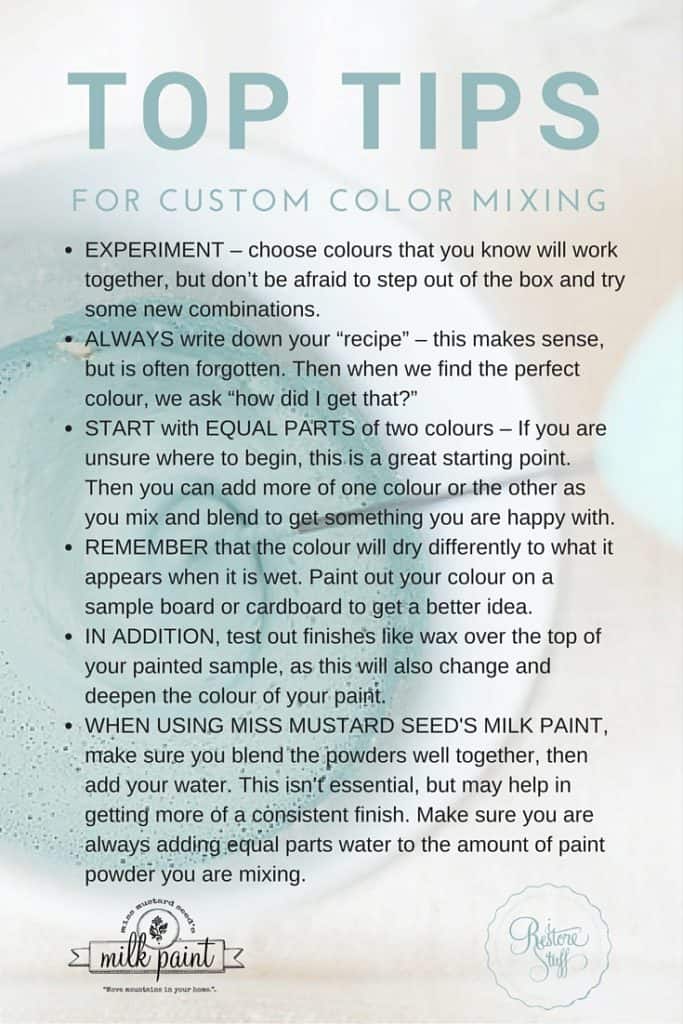
Hover over the Pinterest Button to save this to your pinterest board.
I’d love to hear what colour recipes you’ve tried. Let me know your combo’s in the comments below.
Also, if you have any extra helpful tips on mixing colours, please share!
Happy painting!
Sharon.
